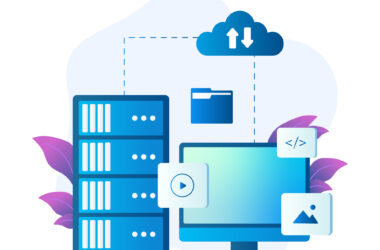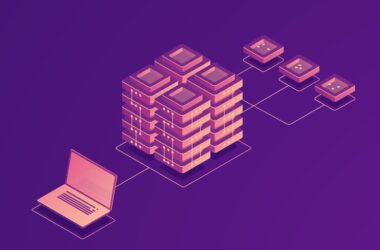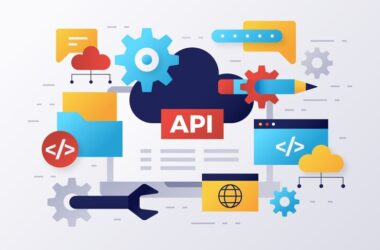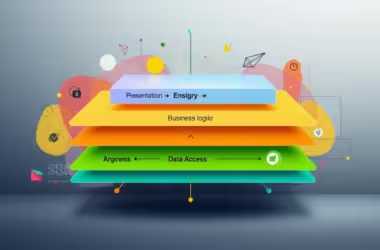In our fast-moving digital world, performance optimization is key for software design. With more complex applications, speeding up software can make a big difference in keeping users happy. A delay of even a few seconds can cause over 53% of mobile users to leave a website. This happens if it takes more than three seconds to load. This article will cover important ways to make applications run faster. These include good coding, making databases work better, and using the latest design methods.
To improve software speed, companies need to use effective optimization strategies. Tools such as AsyncProfile and JVisualVM help find problems by profiling. By also doing regular code reviews, analyzing logs, and benchmarking, maintaining and boosting software speed gets easier. Focusing on performance optimization not only makes users happy. It also helps businesses do well in today’s competitive digital market.
The Importance of Performance Optimization
Performance optimization is key in software architecture. It affects how well applications work and meet business aims. The way an app performs can greatly impact how users feel and act. Knowing this helps businesses do better.
Impact on User Experience
People expect websites to work fast and without problems. If a site is slow, users may leave it quickly. In fact, 53% of mobile users will leave if a site takes more than 3 seconds to load. By making sure websites load fast, users have a good experience. Techniques like making images smaller, simplifying code, and using a Content Delivery Network (CDN) make sites run faster.
Effects on Business Metrics
How well a business achieves its objectives is shown through business metrics. Optimizing for speed helps businesses grow. According to Akamai, even small delays can cut conversion rates by 7%. This shows how crucial fast performance is. Also, well-optimized systems can save 15-20% in costs. They can also handle more users, up to 25% more. The gains from optimization are clear, showing it’s vital for profit.
Understanding Software Architecture
Software architecture is crucial for any application, shaping how its parts work together. It not just affects operation quality but lays the base for enhancement. With a smart design, a system grows smoothly to meet rising demands while keeping up its performance.
Definition and Components
The concept of Software Architecture involves the overarching setup of a software system. It deeply influences the system’s function and speed. Among the key parts of software architecture are:
- Overall Structure: This outlines how different parts of the system connect and talk to each other.
- Architectural Patterns: These are tried-and-tested answers to usual design issues.
- Client-Server Model: This setup aids the back-and-forth between client inquiries and server replies.
A good software architecture tackles complexity and fulfills various critical needs such as speed, safety, and dependability. Having a clearly documented architecture helps teams work together and keep the system running smoothly.
Role in Performance Optimization
Choices in architecture have a big impact on making a system work better. Important aspects include:
- Scalability: A solid structure lets systems manage more work without losing speed.
- Modular Design: This allows developers to focus on one part at a time, making building and upkeep easier.
- Concurrency and Parallelism: These designs let many tasks happen at once, cutting down wait times and boosting efficiency.
- Resource Allocation: Good architecture uses system resources in the best way possible, essential for better performance.
The process should start with clear goals for performance. Testing often across different conditions checks if the system holds up. Using caches also cuts down the load on the back end, which makes things run faster.
Identifying Performance Bottlenecks
Finding performance bottlenecks is key to making software run better. Different factors can slow down an app’s overall performance. It’s important for pros to know these factors. This way, they can spot and fix issues faster.
Common Sources of Bottlenecks
Many things can cause software to run slowly. Here are some common reasons:
- Insufficient Hardware Resources – Not enough memory or CPU power can make things drag.
- Inefficient Code Execution – If the code is bad, it uses too much CPU and responds slowly.
- Suboptimal Database Queries – Bad queries or indexing can make retrieving data slow.
- Poor Environmental Configurations – Wrong settings can lead to delayed responses and sluggish performance.
Diagnostic Techniques for Detection
To fix these slow-downs, developers have tools and methods. Knowing how to use them can quickly help find and solve issues:
- Profiling – Tools like AsyncProfile and JProfiler help analyze where the code needs to be better.
- Code Reviews – Checking code regularly finds problems early, leading to smoother, faster software.
- Log Analysis – Looking at logs can show where performance drops.
- Benchmarking – Comparing software performance to standards shows where it can improve.
Performance Optimization Strategies
To get software to perform at its best, we use various strategies. These improve how code works, make databases run faster, and make better use of caching. Each method has its own role but all aim to make the user’s experience smooth and the application strong.
Code Efficiency Techniques
Making code work more efficiently is key to faster running and more responsive applications. Important ways to do this include:
- Eliminating redundant or obsolete code to make everything more streamlined.
- Simplifying loops to make code both easier to read and run faster.
- Refactoring code so it meets best practices, which makes it easier to keep up and improve.
Database Optimization
Making databases perform better is crucial for an app’s overall speed. Some smart moves are:
- Creating appropriate indexes helps find data faster.
- Using parameterized queries not only boosts security but also makes queries run more smoothly.
- Starting connection pooling cuts down on the time needed to connect, which speeds up data access.
Caching Strategies
Using caching methods can majorly speed up an app. Storing commonly used data closer to where it’s used cuts down on wait times. Good caching methods include:
- Server-side caching to lower server demand and speed up access to data.
- Client-side caching lets browsers keep resources, which means they don’t ask for the same data over and over.
Key Performance Metrics to Monitor
Tracking key performance metrics is crucial. It lets us see how well optimization strategies are working. Metrics give insights for data-driven decisions. This improves user experience and achieves business objectives. Important metrics include Response Time, Scalability, and Resource Usage.
Response Time, Throughput, and Scalability
How quickly a server responds affects how we view app effectiveness. A quick response boosts interactions. Delays, however, push users away. Throughput, or requests processed each second, shows server capability. It indicates how well the app meets user needs without losing speed.
Scalability describes how an app handles more users. It’s vital for keeping the app running smoothly as user numbers increase. Good response time and throughput, paired with scalability, show a well-planned system. It can expand without sacrificing user happiness.
Resource Utilization Metrics
Metrics like CPU, memory, and disk usage are key. They show resource efficiency. High CPU usage could mean performance problems. It might require further checks or upgrades. Memory and disk usage are also critical. They must be managed well to avoid slowing down the system.
Other metrics to watch are server processing time and error rates. Processing time affects how fast a request is completed. High error rates upset users and need quick fixing. Latency, the travel time for data, is also important. It adds to our understanding of user satisfaction.
Using automated tools helps in regularly checking these metrics. Working together and focusing on customer needs are key. This ensures metrics not only hit operational targets. They also boost user happiness. Applying these insights ensures a strong, user-friendly app environment.
Best Practices for Continuous Performance Optimization
To get the best performance from software, it’s key to keep optimizing. Doing regular performance tests helps make sure systems can handle different user actions. It’s also important for the development and operations teams to work closely. This teamwork helps improve the software and keep its performance smooth.
Regular Performance Testing
Continuous Performance Testing (CPT) is essential to find any slowdown issues early. By using tools like JMeter, K6, or Selenium, we can test different loads and situations before they become real problems. This method means we’re always ready, not just when things are busy or at project milestones.
- Load Testing
- Stress Testing
- Endurance Testing
- Throttle Testing
- Peak Testing
- Spike Testing
- Scalability Testing
Each testing type has its own role in making the system run better and use resources wisely.
Collaboration Between Development and Operations
When developers and operations teams work together, it creates a powerful partnership. They share knowledge about the software and how it’s built. This helps everyone keep an eye on performance, make necessary tweaks, and tackle inefficiencies. Fixing these issues quickly means the software runs better and faster.
Implementation of Auto-Scaling
Auto-scaling adjusts resources based on how much they’re needed, which is great for handling busy times without extra work. It’s important to also look after databases and make sure they can handle more data without slowing down. Using smart indexing helps data come up faster, keeping performance high even when there’s a lot to do.
Advanced Techniques for Performance Enhancement
Advanced techniques are key for high-performing software. Using asynchronous programming and microservices makes apps more efficient and fast.
Asynchronous Programming Approaches
Asynchronous programming lets apps do many things at once. It uses resources well and makes apps respond quickly. Prefetching speeds up apps by getting data before it’s asked for. Facebook uses this smartly for suggesting friends.
- User intent tracking is vital for smart prefetching, avoiding wasted resources.
- Memoization boosts speed by storing results of hard functions for quick reuse.
- Getting different datas at the same time makes fetching data fast and smooth.
Implementing Microservices Architecture
Microservices break down apps into small services that work alone. This makes fixing problems easier and updates simpler. It also makes apps run better. Each service gets optimized and scaled as needed. This helps make database searches faster and cuts down on extra API calls.
Also, using lazy loading and code splitting helps use resources wisely. They let developers load only what’s needed, making apps load faster and improve user experience.
Code-Level Optimizations
At the heart of making software run faster, Code-Level Optimization is all about tweaking the software’s code for better speed and efficiency. By smartly testing and rearranging code, coders can pinpoint and fix slow parts. This also makes their software easier to handle.
Profiling and Refactoring Code
Using Profiling Tools is key to finding which code pieces use up too much resource. These tools help developers see where the application lags. By looking at how the software performs, they can figure out where to make it better. Cleaning up and organizing the code leads to a smoother, faster structure. This makes adding improved parts easier. Strategies include:
- Lessening unneeded calculations to lighten the load
- Storing often-used data to avoid redoing work
- Reducing heavy I/O operations to speed things up
Choosing Efficient Algorithms and Data Structures
The choice of algorithms matters a lot for how fast a system runs. Picking smart algorithms can greatly cut down on time and resources needed. For example, using quick sort over bubble sort helps a lot. The right data structures also play a role in using less memory and being more efficient. Efficient algorithms lead to:
- Making good use of multi-core systems for better speed
- Applying compiler tricks, like unraveling loops, to fasten things up
- Keeping track of changes and testing to keep new improvements from causing issues
Keeping an eye on performance all the time is important to avoid backsliding, ensuring software stays efficient. Simple code isn’t just good for speed; it also makes fixing bugs easier in big projects.
Utilizing Modern Technology for Optimization
Modern technology is key to making apps work better. Cloud Technology gives us the flexibility and ability to grow. Effective Load Balancing makes sure requests are evenly spread out. This helps avoid system crashes and makes users happy. Also, Application Monitoring tools are crucial. They give us up-to-date info on how the app is doing.
Cloud Infrastructure and Load Balancing
Cloud infrastructure has lots of benefits for making apps run smoother. It lets companies adjust their resources as needed. This keeps apps working well, even when a lot of people are using them. Using Load Balancing across several servers helps to:
- Spread out user requests to avoid overloading servers.
- Keep apps running by directing traffic elsewhere if a server fails.
- Reduce downtime, which makes users happier.
Adoption of Application Performance Monitoring Tools
Application Monitoring tools have changed how we handle app performance. They let businesses keep an eye on important metrics and spot problems early. This leads to:
- Instant updates on app health for quick fixes.
- Finding and solving performance issues early, for better use of resources.
- Making informed decisions based on real performance data.
Using Cloud Technology, Load Balancing, and good Application Monitoring makes apps run better. This helps companies be more efficient in the digital world.
Conclusion
Performance optimization is key in today’s IT world. Applications need to manage large data smoothly. The process includes analyzing performance, finding problems, making improvements, testing, and always monitoring. This enhances the efficiency of Software Architecture.
Improving how users experience apps, cutting downtime, and boosting productivity helps save money. Plus, it meets the need for fast, reliable applications. Tools like Macrometa are great for low-delay, high-speed needs, like streaming videos online.
As tech grows, firms must focus on performance modeling and optimization for different tech settings. Using smart optimization practices is crucial. It helps build strong software systems that excel in our complex digital world.






